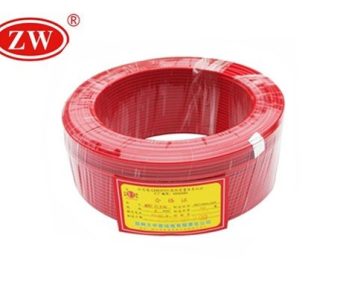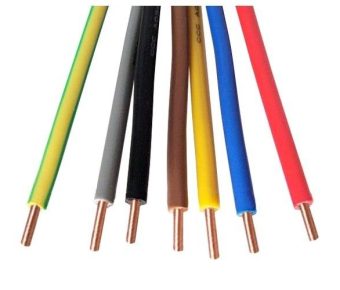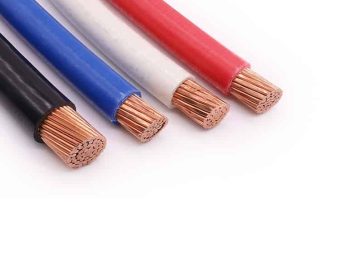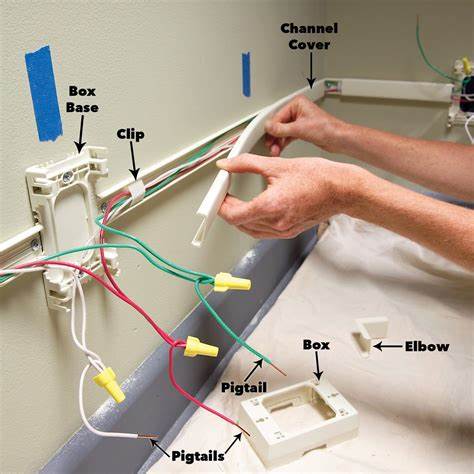- Leading Cable and Wire Manufacturer-ZW
- Electrical Wire
Electrical Wire
- According to IEC 60502-1, GB
- Class 6 Copper Conductor
- Approved by IEC, GB
- Temperature Range: -20°C to +70°C
- Nominal Voltage: 450/750V 300/500V
Electrical Wire Types
Electrical wires are divided into solid wire or stranded wire. The conductors used in the electric wires are copper or tinned copper. We can produce not only single core wires but also multi-core wires. Customers often order 2.5mm wires and 4mm wires. Contact us now we will send your electric wire price.
Table of Contents
Electrical Wire: Choice may impact your wiring project
It may not seem possible to most laypeople, but the choice of the proper electrical wire might determine the success of a home or office electrical wiring project. However, it’s not just your choice of the proper residential electric wire or cable that might impact the outcome of the project. How you wire the premises for the project, and how you push out cables between the electrical outlet and the breaker panel (your mains supply) may also impact project success.
In this electric wire house guide, we’ll cover a number of critical topics, including how to wire an electrical outlet for use with light or appliance, how to run home electrical wire throughout the house, and the type of underground electrical wire to use in outdoor applications like shielded electrical wire. We’ll also talk about the best wire suppliers from where to source your wires and cables.
1. How to Wire Electrical Outlet?
a). Find the right breaker in your mains panel, for the outlet, and turn it off
b). Unscrew the faceplate from the existing outlet (receptacle)
c). You’ll see three wires flowing from wall to outlet. Use a tester to ensure there’s no power flowing through the wires. Unscrew the wires from the outlet and place the outlet aside
d). Connect the white (neutral) wire to the silver screw on the outlet like 8 gauge electric wire.
e). Connect the bare ground wire to the green screw such as 6 gauge electric wire.
f). Connect the electrical black wire(hot) wire to the gold screw such as 12 gauge thhn electrical wire.
g). Position the receptacle back into the electrical outlet cutout in the wall, and screw it onto the stud. Next, replace the faceplate and screw it back on
h). Return to your electrical box (mains panel) and restore power back to the outlet
Please note that the colors indicated above are general guidelines.
Follow the color-coding standard explained in the section What Do the Different Colors of Electrical Wire Mean, for specific guidelines. For instance, depending on which country you live in, the red electrical wiring cable may signify phases, while other jurisdictions might rely on a blue electric wire for the same application.
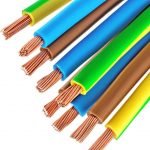
Knowing the basic electric wire types is essential for nearly all electrical wiring projects around your home or office.
2. How to Run Electrical Wire?
Here’s what you need to do to run electrical wire through your home or office:
a)Switch off the main power switch at the breaker panel
b)Unscrew the screws of the breaker box and remove it
c)Use an electrical tester to confirm that there is no power flowing into the breaker box
d)Unscrew the covering from one of the holes of the sub-panel breaker on the top of the breaker panel
e)Attach a cable clamp through the hole and onto the end of the cable that needs connecting to the breaker panel (the other end of that cable will connect to the electrical outlet for an appliance – see section 3 for details)
f)Sometimes, it may be a challenge to run the cable from the panel box to the target electrical outlet, especially if you are working alone without an assistant. You may find using a wire coat hangar makes a great way to snag building wires through walls and pipes
g)Run a 4 core cable from this sub-panel breaker point through the clamp and tighten it. Pay special attention to the electrical wire colors. Make doubly sure that you’ve properly connected the copper wire (220 wire), the white covered wire (the neutral electrical wire), the black electrical wire (the electric hot wire), and the electrical red wire (another hot wire electric), 10 electrical wire is a most popular size.
h)With the connections secure, hold the circuit breaker and push it back into the panel so it clicks firmly into place
i)Replace the cover of the breaker panel
3. How to Wire A House for Electricity?
Household wire projects aren’t just about changing electrical sockets or adding new plugs to appliances. Sometimes you may need run electricity wire from a mains power box (breaker box) to an electrical outlet. To do this, follow the steps below:
a)Cut out holes in the drywall next to (above or below) the appliance to which you wish to supply power
b)Plan your wiring route carefully. Sometimes, measuring the cable length, between the service panel (breaker box) to the electrical outlet isn’t as straightforward as one may think. House electrical wire may need to run through walls, over the attic, or around corners and bends in the house. The best way to get started is to use the latest electrical circuit diagram for the premises
c)Use a drill and drill holes (3/4-inch) in the upper and lower plate of the wall near (above or below) the appliance
d)Use fish tape coil and tape the cable to its end, and start feeding the cable through a hole from the starting point (near the breaker box). Have an assistant standing by the hole you cut out near the appliance. As the power wire, you feed pass near the cutout, have your helper pull the cable through the opening
e)Follow the steps outlined in section 1 above (How to Wire home electric wire?) and connect the 12ga electrical wire, pulled by your helper, to the electrical outlet for the appliance
f)Follow the instructions in section 2 above (How to How to Run industrial electric wire and cable ) and connect the wire to the breaker box (mains panel)
One word of advice to anyone embarking on a project to run electric copper wire across the home or through the office: Unless you know what you are doing, and preferably have an electrician’s license – do not attempt to wire a home for electricity without professional supervision.
Before you wire, you can find out the price of electrical wire for example 10 gauge electrical wire price. According to the market situation, the best-selling electrical power wire is a 14 gauge wire.
4. What Kind of Electrical Wire Can Be Buried Underground?
These are called direct-burial underground cables and are specially designed to be buried in underground trenches. Typically, solid thermoplastic sheaths protect heat resistant electrical wire in the cable, protecting them from moisture and shielding them from each other.
The most commonly used direct-burial electric underground wire, for residential use, are underground feeders (UF) and underground service entrances (USE). The UF cable is usually gray in colour and delivered in rolls similar in nature to standard non-metallic (NM) sheathed cables. The key point to note is that, while standard NM cables are indoor electrical wires, the UF cable is an outdoor-use cable.
The USE cable is black in color and typically buried underground to bring power from the utility station (electrical grid) to the home. A homeowner or typical commercial electrician would normally not deal with USE cables as these require higher levels of expertise to handle. Both cables belong to industrial electric wire and cable.
5. What Do the Different Colors Of insulated Electrical Wire Mean?
Wire and cable identifications depend on standard color codes, like red, blue, silver, black, white, etc. So, what do the different colors mean, and which ones should you use for your specific project? Well, the answer is – it depends.
The two major factors that determine what the colors mean include:
a)What you are trying to do in your wiring task – Do you want to earth or ground a connection, or are you trying to run a neutral connection for your application
b)Where (which part of the world) is the project undertaken
As indicated by the chart above, various jurisdictions use different colors to indicate Phases, Neutral and Earth/Ground wires. For instance, in the U.S. and Canada, black electric cable wires indicate phase, while in other parts of the globe (EU), brown-colored wires indicate that application. In most jurisdictions, blue electrical wire indicates neutral, while black or silver color is used in others.
These color codes apply to flexible wires and cables. There is a different set of color codes used for fixed cable identification. There is also a similar color-coding standard applied for fixed cable applications, and these too vary from region to region and based on application (Phase. Neutral, Earth/Ground).
In fixed electrical cable applications, the most significant difference in electrical wire colors is in phase wires. These colors might also differ based on single or multi-phase electrical wiring applications. Also, in some countries copper electrical wire may be used for phases, while some others might standardize on aluminum electrical wire. In the next step, we will introduce electrical wire copper vs aluminum.
6. Electrical Wire Manufacturers ZW Cable is Your Best Choice
As you can appreciate, there’s a lot involved in choosing and using the right home depot electrical wire for the right project. Not only is the proper technique needed to wire a house for electricity, but success of the project also depends on your choice of the right electrical wire. With so much at stake, you need a wire manufacturer or electrical wire wholesale like ZW Cable to provide you the right electrical cable. Not only will you get the right product for the right application, but you’ll have access to the most reasonable electrical wire price anywhere. If you looking for an electrical wire supplier near me, ZW cable will be your best choice. Guaranteed!

